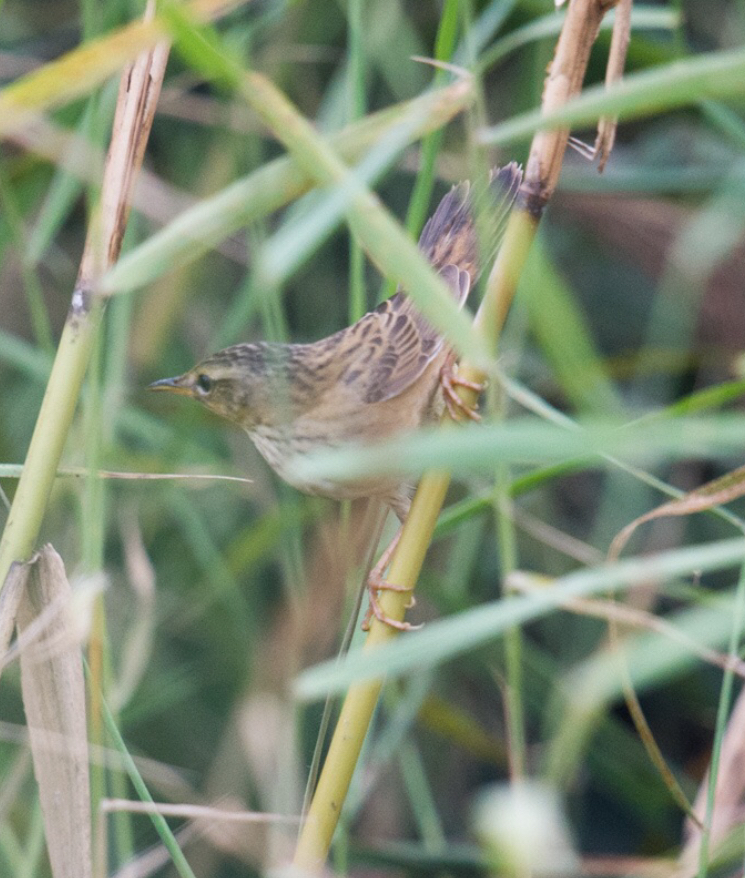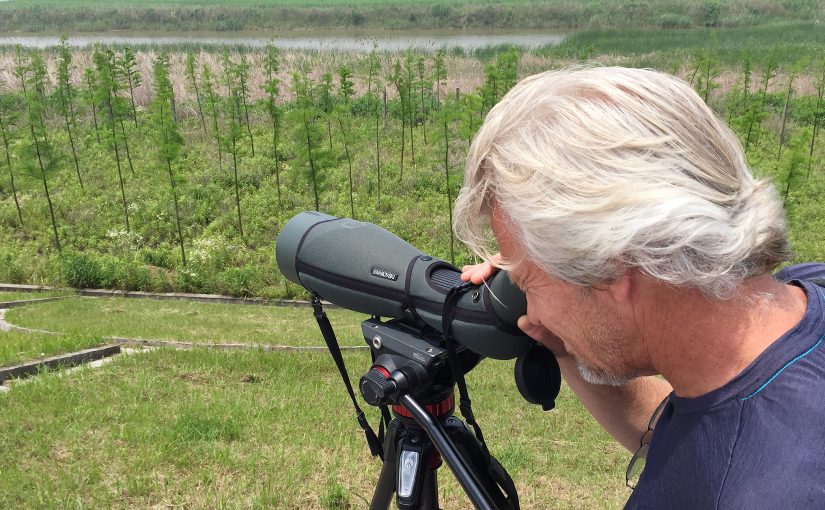by Craig Brelsford
Founder, shanghaibirding.com
“I have thought a lot about yesterday and can honestly say, it must be one of my all-time ornithological highlights.”
— Dr. Mike May, message to Craig Brelsford
Those are the words not of a new birder, but of a highly experienced visiting birder with thousands of birds on his life list who resides in bird-rich Extremadura, Spain.
Birding Pudong’s Cape Nanhui at the height of the spring migration left Mike May open-mouthed. Should anyone be surprised? The most southeasterly point of Shanghai is a world-class birding site.
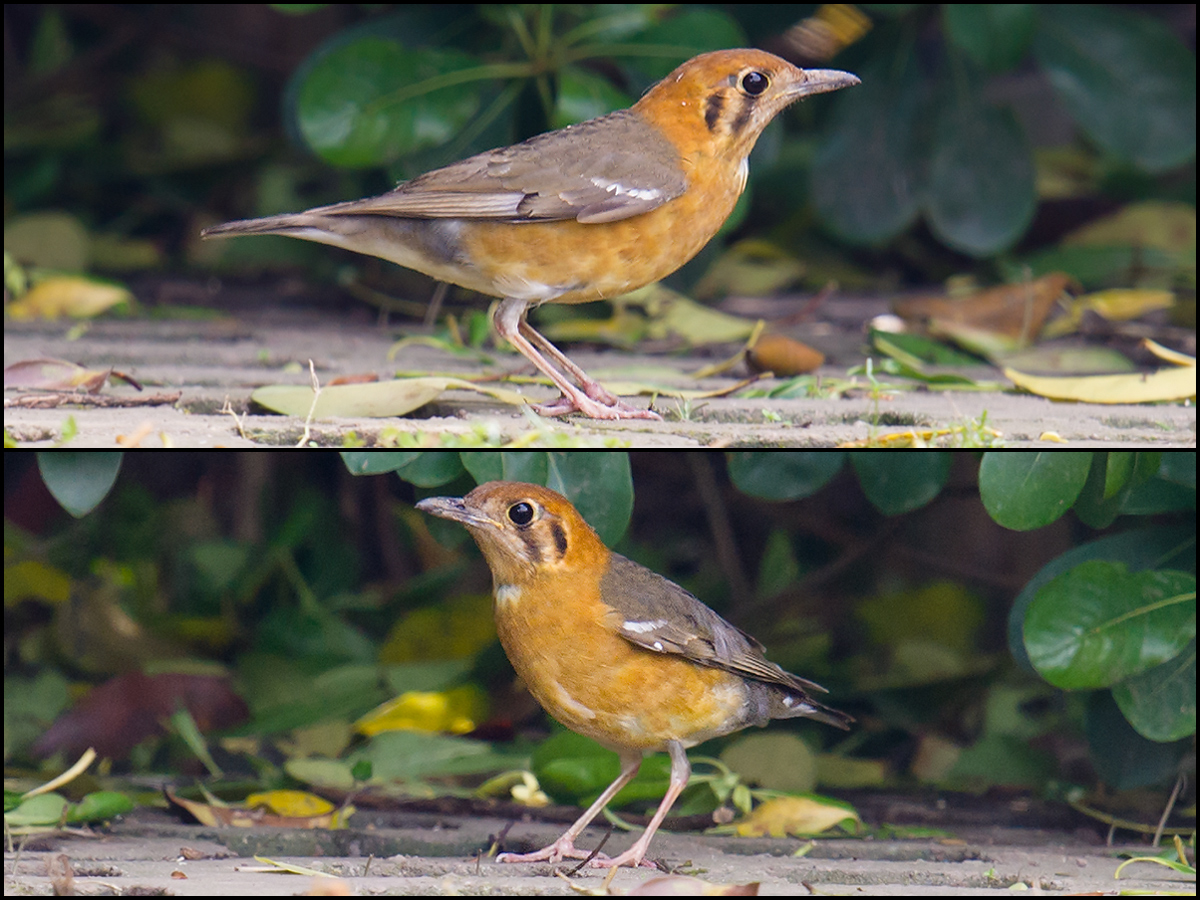
Mike’s 92-species day with Beijing-based Swedish birder Jan-Erik Nilsén and me included ultra-rarity Orange-headed Thrush as well as Pallas’s Grasshopper Warbler and Lanceolated Warbler. A pair of sub-adult Black-faced Spoonbill were getting by on the ever-shrinking pools at the beleaguered site.
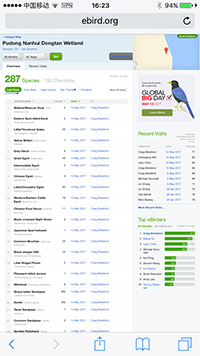
These records brought the all-time list for Cape Nanhui to 288 species, according to eBird—making Cape Nanhui the second-hottest birding hot spot in China.
Let me say that again: Of the thousands of birding spots in this vast, mega-diverse nation, the most southeasterly point of Pudong and Shanghai is second only to Baihualing in Yunnan in species noted.
Sound unbelievable? Let me say something even more unbelievable: Not only is this rich spot completely unprotected, with not even a square meter preserved in any legal way; but it is, to the contrary, being actively destroyed, even as I tap out these words.
The backdrop to the work of Mike, Jan-Erik, and me was fleets of bulldozers and backhoes, busy throughout the weekend. They clattered and clanged, and the pumps transferring water into the newly dug canals whirred and chugged.

The pace of transformation is faster than ever now.
“Nanhui is gone,” my partners and I said.
A major ecological area, a place combining ease of access to millions of residents of Earth’s largest city and a favorable position on Earth’s greatest migratory flyway, is being utterly transformed.
While the Cape Nanhui that I have long known falls, huge tracts of adjacent tidal mudflat are being reclaimed, adding dozens of square kilometers to the land area of Cape Nanhui. Birding there in theory could have a future. A Cape Nanhui Nature Reserve could be set up in the new area.
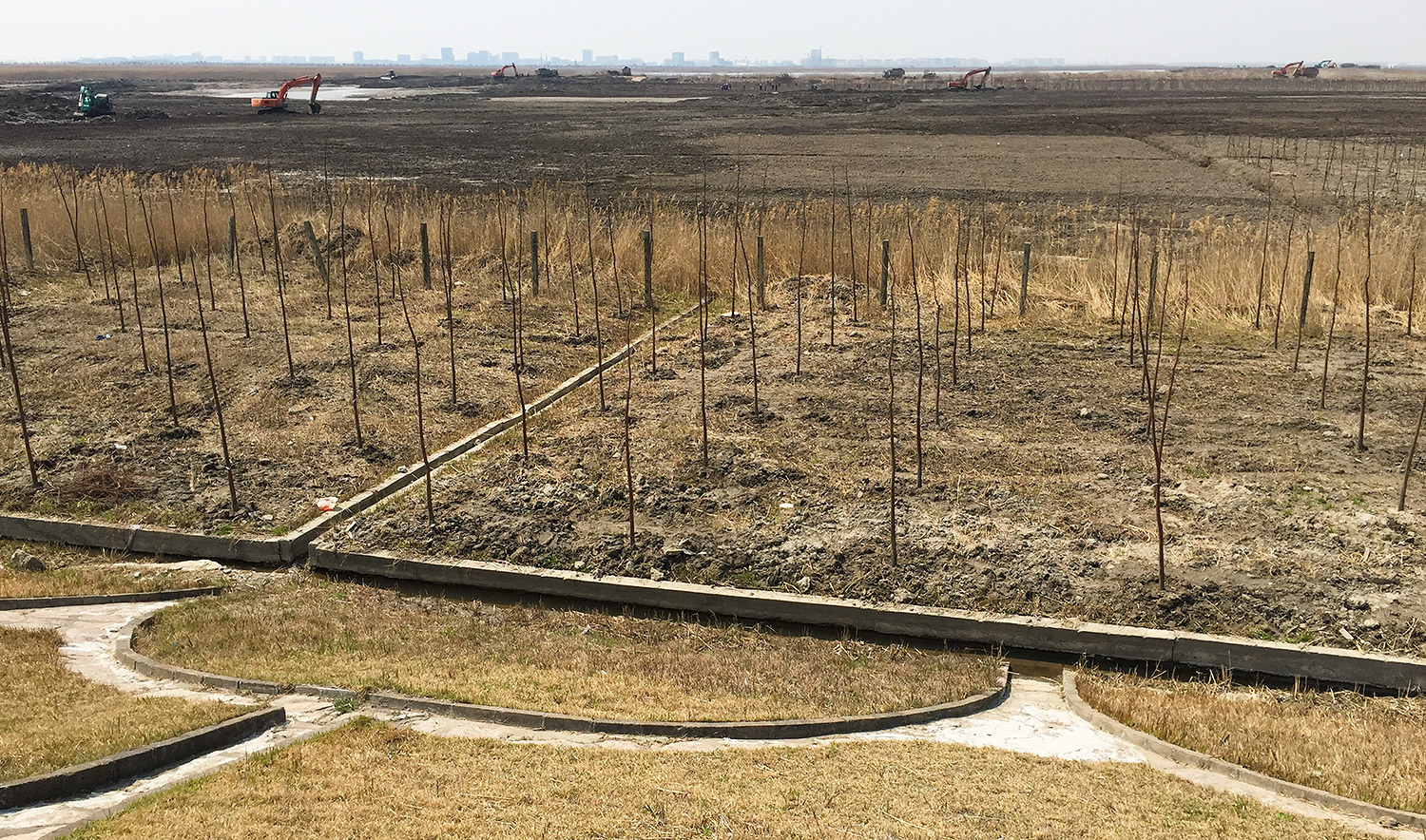
But even as the Cape Nanhui we know falls, no one, to my knowledge, has hastened to reassure conservationists that areas in the newly reclaimed land will be set aside for birds.
In the city-province of Shanghai, which is the size of the U.S. state of Delaware, a few places have indeed been set aside, among them Chongming Dongtan. But those reserves are small, on remote islands far from mainland Shanghai, and practically unreachable by the millions of middle-class Shanghainese who lack a car.
Cape Nanhui, by contrast, is easily reachable from the city. And it is the one place where masses of bird lovers can conveniently get a taste of the grand spectacle that is spring migration along the east coast of the Eurasian supercontinent.
That opportunity is being taken away, not only from the birders alive today, but also from the birders of the future.
THE THRILL OF CAPE NANHUI IN MAY
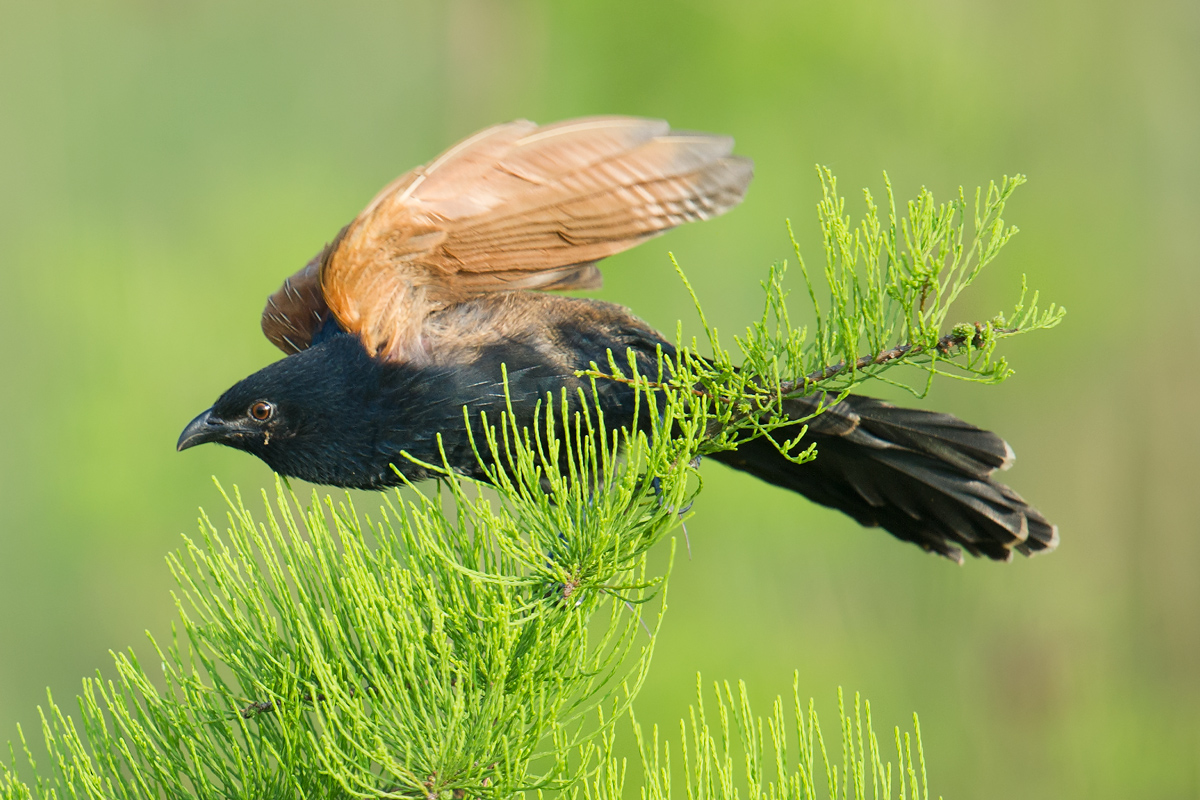
Our agony over the fate of Nanhui was tempered by the joy of birding. Orange-headed Thrush showed up Saturday at the Magic Parking Lot (30.884898, 121.968229). With the two vertical bars on its face, our specimen was either of race melli (breeds Guangdong, etc.) or courtoisi (Anhui).
On Sunday the Magic Parking Lot delivered singing Grey-crowned Warbler Seicercus tephrocephalus, and in Microforest 2 (30.926013, 121.970705) an appearance was made by Alström’s Warbler S. soror. Neither breeds in the region; both are very rare vagrants to Shanghai.
Iron Track (31.003613, 121.907883) gave us singing Yellow-breasted Bunting in full breeding finery and singing Pallas’s Grasshopper Warbler. I captured the latter’s song, rarely heard in Shanghai.
Pallas’s Grasshopper Warbler Helopsaltes certhiola, 13 May, Iron Track (31.003613, 121.907883) (00:13; 2.1 MB)
The Marshy Agricultural Land (30.850707, 121.863662) near Eiffel Tower was highly productive, yielding Lanceolated Warbler, Forest Wagtail, and Striated Heron.
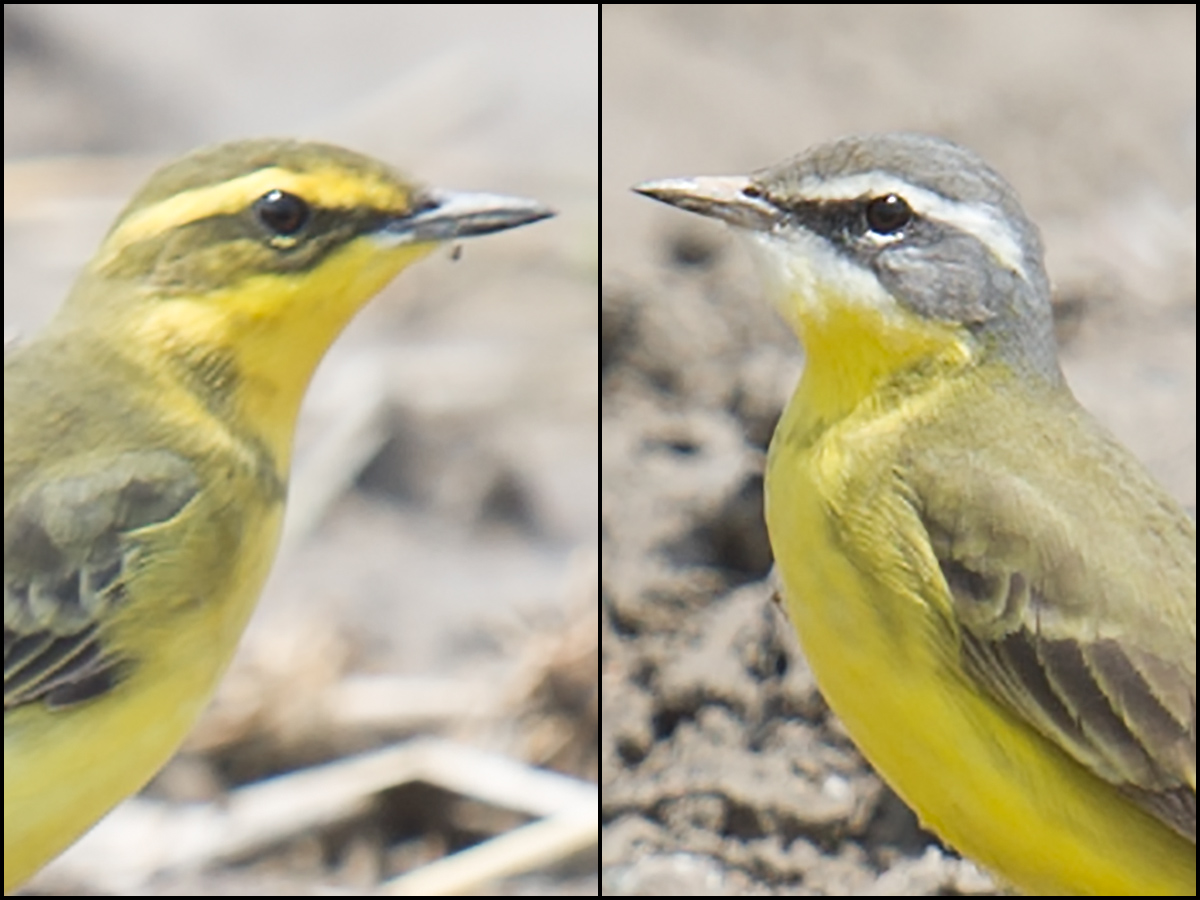
Other highlights from Saturday along the 30-km stretch of coastline:
Yellow Bittern Ixobrychus sinensis 2
Chinese Egret Egretta eulophotes 14
Pacific Golden Plover Pluvialis fulva 1
Pheasant-tailed Jacana Hydrophasianus chirurgus 1
Black-tailed Godwit Limosa limosa 17
Grey-tailed Tattler Tringa brevipes 2
White-winged Tern Chlidonias leucopterus 260
Lesser Coucal Centropus bengalensis 1
Common Cuckoo Cuculus canorus 12 singing
Tiger Shrike Lanius tigrinus 4
Sand Martin Riparia riparia ca. 300
Collared Finchbill Spizixos semitorques 2
Arctic Warbler Phylloscopus borealis 5 singing
Thick-billed Warbler Arundinax aedon 1
Marsh Grassbird Helopsaltes pryeri 2 singing
Forest Wagtail Dendronanthus indicus 1
Complete checklist here.
Sunday saw Jan-Erik and me note 78 species.
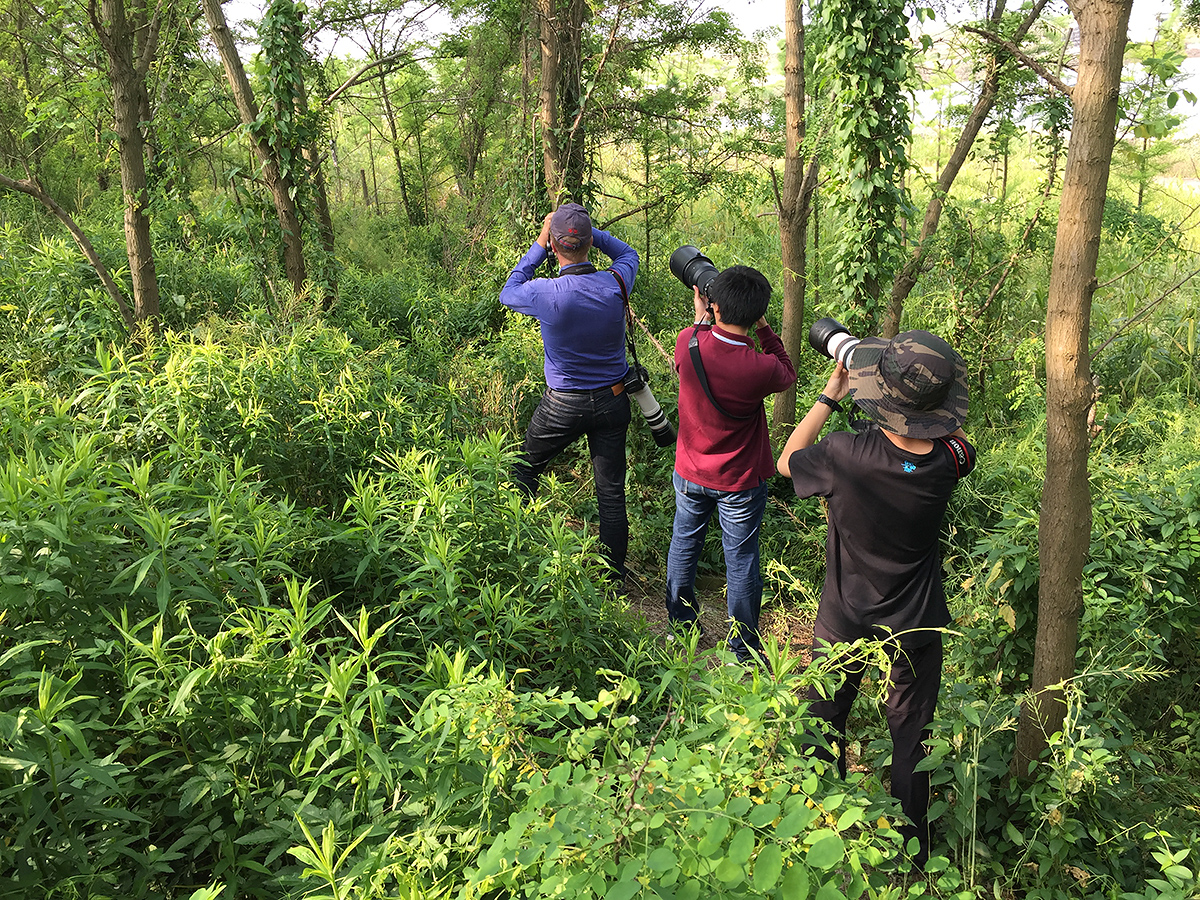
Highlights:
Japanese Sparrowhawk Accipiter gularis 1
Sharp-tailed Sandpiper Calidris acuminata 50
Dunlin C. alpina 350
Oriental Pratincole Glareola maldivarum 3
Little Tern Sternula albifrons 5
Hair-crested Drongo Dicrurus hottentottus 8
Dusky Warbler Phylloscopus fuscatus 1
Taiga Flycatcher Ficedula albicilla 1
Pechora Pipit Anthus gustavi 17 singing
Complete checklist here.
Featured image: Visiting British birder Mike May scans for birds at Cape Nanhui. An experienced birder, May was nonetheless overwhelmed by the variety of birds at Cape Nanhui at the height of spring migration. May described his day at Cape Nanhui as “one of my all-time ornithological highlights.” (Craig Brelsford)

